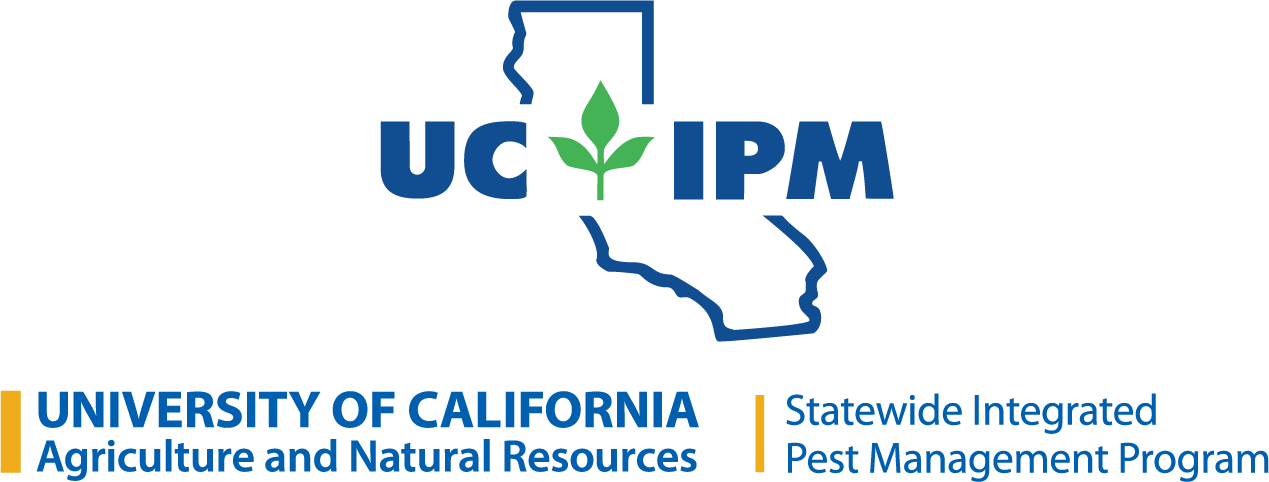A parasite is an organism that lives and feeds in or on another organism (host) usually without killing it. Unlike true parasites (e.g. fleas and ticks), a parasitoid feeds on the host while completing their life cycle, eventually leading to the host’s death. Nearly all insect pests have at least one parasitoid that attacks them. Most parasitoids are tiny wasps or flies. An adult female parasitoid can parasitize hundreds of host individuals in her lifetime, resulting in the reduction of pest numbers.
Insect parasitoids are often smaller than their hosts and develop inside, or attached to the outside, of the host's body. Only the immature stage of the parasite feeds on the host.
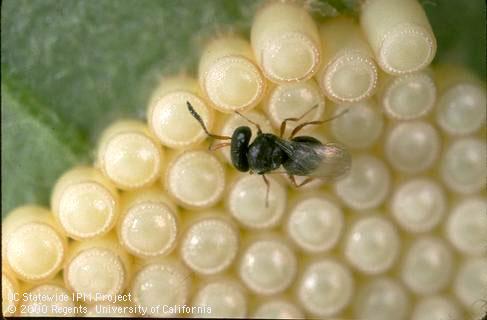
Parasitoids of caterpillars
Numerous species of parasitoids attack caterpillars, the larvae of butterflies and moths. Some parasitoids target the larval stage (caterpillar) and some species attack the egg stage of caterpillars. Most larvae are attacked by only one species of parasitoid, while some have more than one species of wasp. For example, redhumped caterpillar larvae are attacked by two common parasitic wasps, Hyposoter sp., and Apanteles sp.
How it works: a female wasp injects an egg into an early instar (young) caterpillar; the wasp egg hatches into a larva that feeds on the insides of the host. The host continues to feed on the plant while the parasitoid inside it also feeds and grows. Eventually the host dies before it reaches its pupal stage, but wasp larva emerges from the host's body, spins a cocoon, and pupates. The adult wasp emerges from the cocoon to mate and seek new hosts. Each female can destroy as many as 100 host caterpillars. The life cycle takes as few as 15 days, depending on temperature.
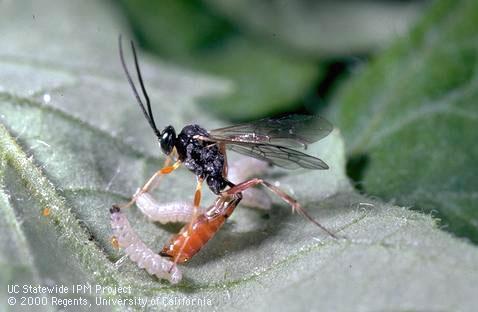
Some parasitoids, such as Goniozus legneri lay many eggs externally on their caterpillar host, resulting on many wasp larvae feeding on a single caterpillar.
Tachinid flies parasitize many types of insects. Some lay eggs on plants and enter their insect hosts by being eaten. Tachinid eggs can be laid on the outside of caterpillars and when they hatch, the larvae bore into the host.
Aphid parasitoids and others
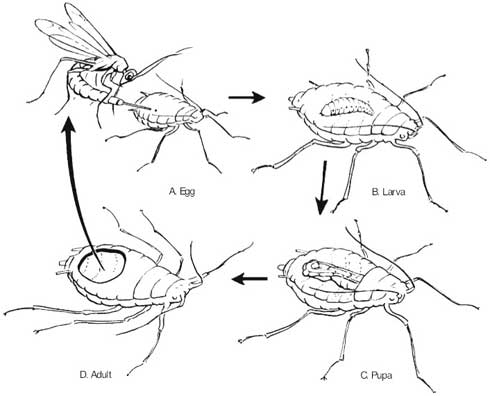
Similar to parasitoids of caterpillars, the adult female wasp lays an egg into its aphid host. Parasitized aphids turn into black or beige “mummies.” A hole in an aphid mummy shows that a parasitoid has emerged.
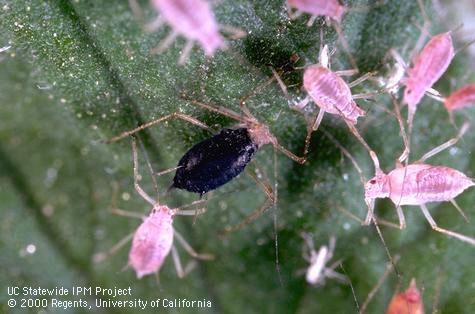
Other parasitoids
Scale insects become discolored and turn black when they are been parasitized by wasp larvae. Once parasitoids mature into adults, they emerge through an exit hole in the scale.
Similarly, whitefly parasitoids can turn their host from white to black while others do not. A circular hole in the exoskeleton of a whitefly pupa indicates that a whitefly parasitoid has emerged.
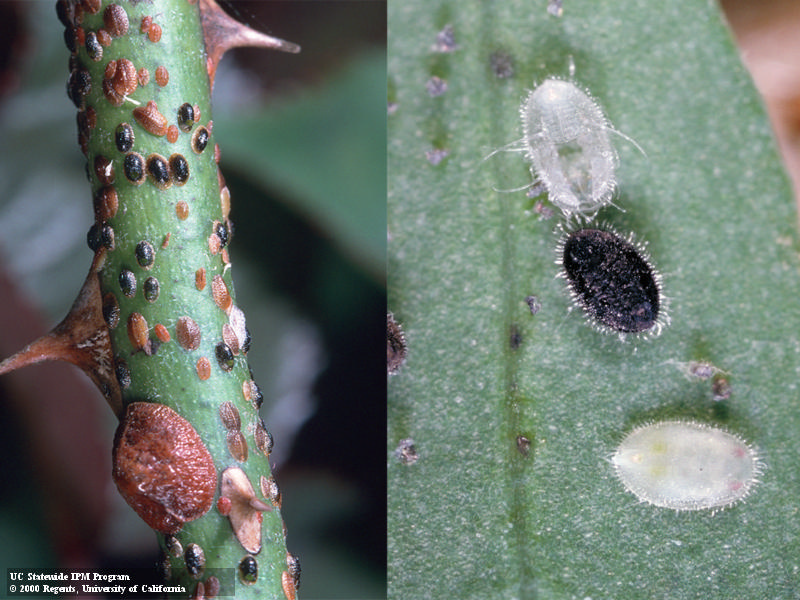
Read more about Biological Control and Natural Enemies of Invertebrates. See also Natural Enemies Gallery and more biological control resources.
